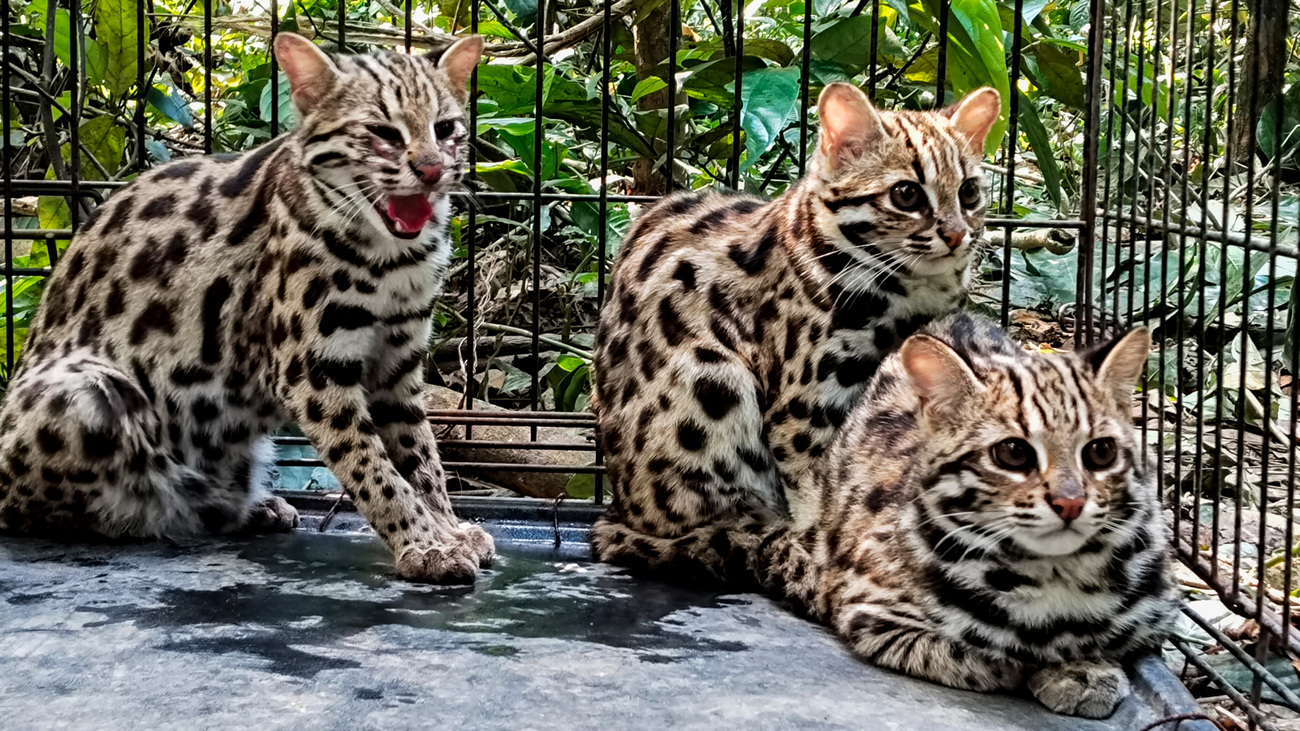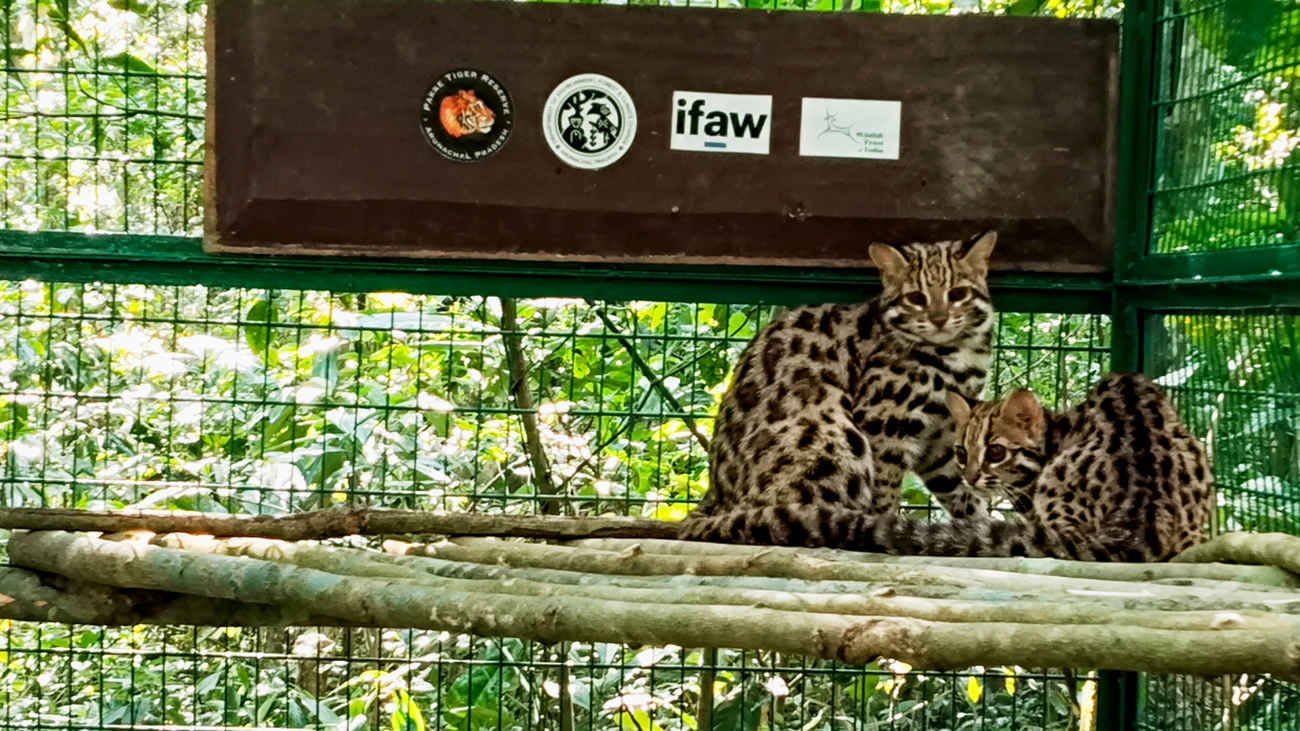Centre for Bear Rehabilitation and Conservation - India
A cub that loses its mother shouldn’t have to lose its homeRescued leopard cat cubs return to the wild
Rescued leopard cat cubs return to the wild
Not a leopard despite its spots—and not a domestic cat despite their small size—the leopard cat is the most widespread wild cat in Asia. Though classed as least concern by the IUCN, these wide-eyed, strikingly patterned felines still face serious threats, including hunting for the fur and pet trade.

Actions like these often leave young animals orphaned, and, unable to fend for themselves, they perish. We see this happen in species from elephants to orangutans. But thanks to the dedication of professional rescue and rehabilitation teams, these animals have a second shot at life in the wild, should they develop the skills necessary for survival in their natural habitats.
In June 2024, residents found three orphaned leopard cat cubs in the town of Chambang, Kra Daadi district, in Arunachal Pradesh, India. They alerted forest authorities, who ensured the cubs ended up in the care of professionals at Itanagar Zoological Park, before being transferred to the Centre for Bear Rehabilitation and Conservation (CBRC).
Keeping wild cubs wild
The Centre, run jointly by Wildlife Trust of India (WTI), Pakke Tiger Reserve Park Authority, and the Department of Environment, Forest & Climate Change Arunachal Pardesh, and supported by IFAW, provided the urgent care the cubs needed.
Upon arrival, they were very small and weak. They needed to be hand-raised—a challenging process and a choice that is never made lightly, as physical interaction with humans is never the ideal scenario for young, developing wild animals. IFAW–WTI veterinarians are careful to consider animals’ health needs, but also their wild nature—and the hope that they will be able to return to the forest someday, living on their own.
The veterinarians work to replicate as best as possible the care these animals would receive from their mothers in the wild, while also providing necessary veterinary care for stress, injuries, and disease. It’s particularly tricky to rehabilitate young wild cats, as they are solitary animals by nature—aside from during mating and the first few months of their lives, leopard cats don’t interact with one another. It’s important to give them opportunities to learn on their own.
A second lease at life in the wild

After four months at the CBRC, the three cubs have been transferred to Pakke Tiger Reserve for a soft release. For about three months, they will get acclimated to the release site before their full reintroduction to the wild. Next, they will follow the soft-release protocol developed by WTI specifically for small cats.
At IFAW, we believe every individual animal matters—every life saved and every second chance given to an animal marks a step taken to preserve our planet’s precious biodiversity. We have high hopes for these small cats as they complete the rescue-rehabilitation-release cycle and re-discover the forests they call home.
Related content
Every problem has a solution, every solution needs support.
The problems we face are urgent, complicated, and resistant to change. Real solutions demand creativity, hard work, and involvement from people like you.